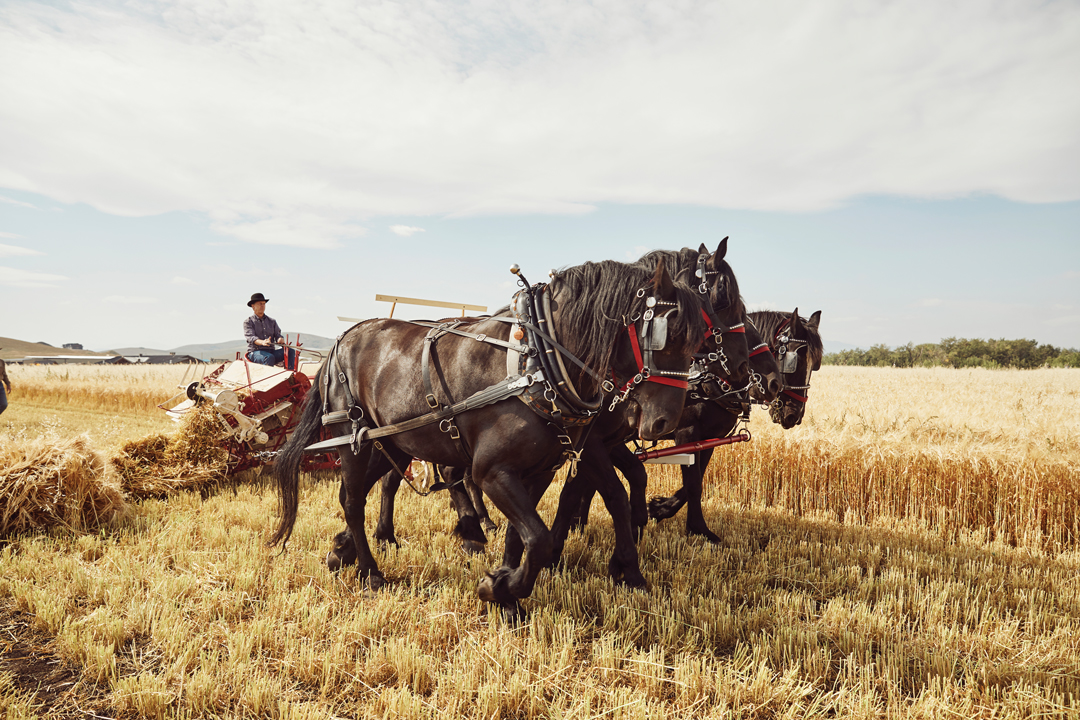BEST BARLEY AND TOP TALENT FOR THE WIN
BY KAREN DURRIE • PHOTO COURTESY OF EAU CLAIRE DISTILLERY
David Farran believes it is only natural Alberta distillers use the province’s own high-quality barley to produce their products. The founder and president of Eau Claire Distillery in Diamond Valley, he credits locally grown barley and a talented distilling team for a platinum trophy win at the San Francisco World Spirits Competition in April.
“It’s the No. 1 award to win in the world,” he said. “It’s like winning gold at the Olympics.” The winning spirit, Rupert’s Exceptional Canadian Whisky, took the coveted title and brought immediate international recognition for the brand.
Farran grew up in Millarville and hails from a long line of area farmers and cattle ranchers.
The former vice-president of Big Rock Brewery, he launched the province’s first craft distillery in 2013. It now produces bourbon, gin, prepared cocktails, vodka, whisky and other quaffs.
“We are really blessed with terroir here,” said Farran. Alberta’s growing season, soil and geography produce barley that is perfect for making whisky. “It’s also ingenuity in that we use a lot of different barrel types to mature it in.”
AAC Synergy barley is the distiller’s staple raw material. The malting barley meets the low protein, high-starch requirements needed for whisky distillation. High yield and a good agronomic package are also important to Farran, as the distillery grows its own near Langdon.
“We do 12 acres of barley entirely with old-fashioned equipment and draft horses in the traditional way it was done 100 years ago.” He was drawn to Synergy’s strong disease package and sturdy stalks that don’t lay down when harvested by antiquated production methods. This modest harvest is used in a small-batch whisky that is now maturing and will receive a special release in the future.
The distillery also uses barley and additional grains such as corn and rye that are grown in various locations around the province. This is purchased through the Strathmore Seed Cleaning Plant and malted at Gambrinus Malting Corporation in Armstrong, B.C. The distillation process yields a product that is about 62 per cent alcohol. It is then aged within oak barrels that are new or have previously been used to age sherry or bourbon. They are charred inside to extract these flavours from the wood. There the liquid remains for between three and 12 years. Eau Claire produces the equivalent of about 350,000, 750-mL bottles of spirits per year.
Farran noted that a relatively short aging process is another thing Alberta distillers owe to their location. “Europe and Scotland typically have a long maturation period of 10 or 15 years for whiskey,” he said. Whiskey in these locations is typically stored at 15 C and almost 100 per cent humidity year round. “We have these wild fluctuations of temperature here. The barrel expands and contracts, so it pulls more flavour [from the wood] in a shorter period in Alberta.” A five-year-old Alberta whisky can be as mature as a 10- or 12-year-old European whiskey.
Winning the world’s top whisky award has translated into significant publicity both within the industry and with consumers, said Farran. “It has also put us on the radar of large U.S. retail chains and distributors. We have significant capacity, so we do not need to do any expansion.”
The distiller will continue to expand its markets, however, primarily south of the border.







Comments